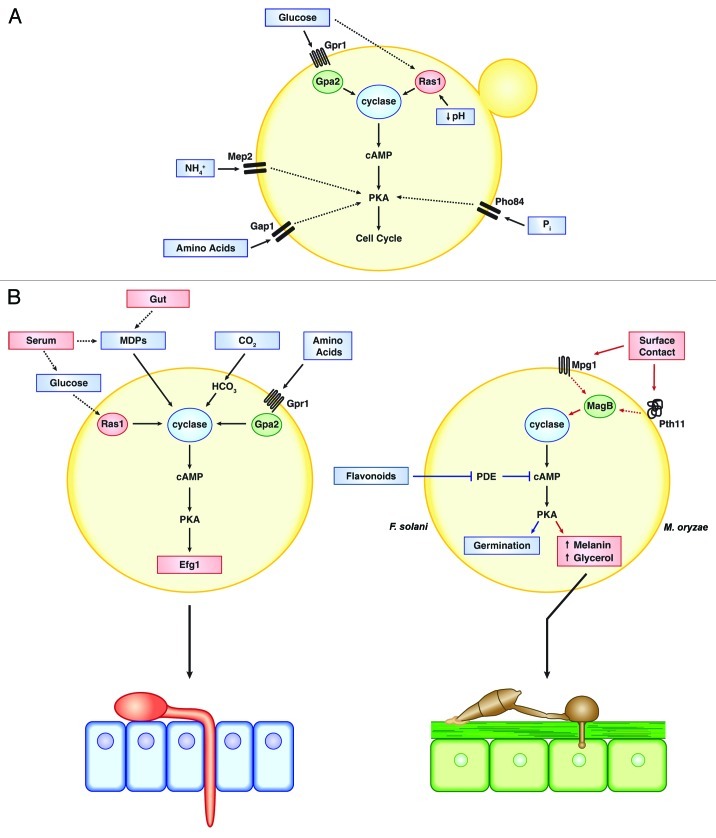Figure 1. (A) Schematic of various signaling inputs and regulatory pathways that govern PKA activity in S. cerevisiae. The cAMP-independent activation of PKA by ammonium (NH4+), amino acids and phosphate (Pi) make up the ‘fermentable-growth medium (FGM)’ pathway. (B) Left: Signaling inputs that activate PKA in the human fungal pathogen, C. albicans (top). Following activation, PKA induces the yeast-to-hypha transition that promotes invasion of the gut epithelium (bottom). MDPs, muramyl dipeptides. Right: Novel signaling inputs and regulatory mechanisms in the plant pathogenic species F. solani (blue pathway) and M. oryzae (red pathway) (top). In M. oryzae, the activation of PKA leads to the formation of the appressorium (AP), which promotes penetration through the outer plant cuticle into the underlying tissue (bottom).

An official website of the United States government
Here's how you know
Official websites use .gov
A
.gov website belongs to an official
government organization in the United States.
Secure .gov websites use HTTPS
A lock (
) or https:// means you've safely
connected to the .gov website. Share sensitive
information only on official, secure websites.
